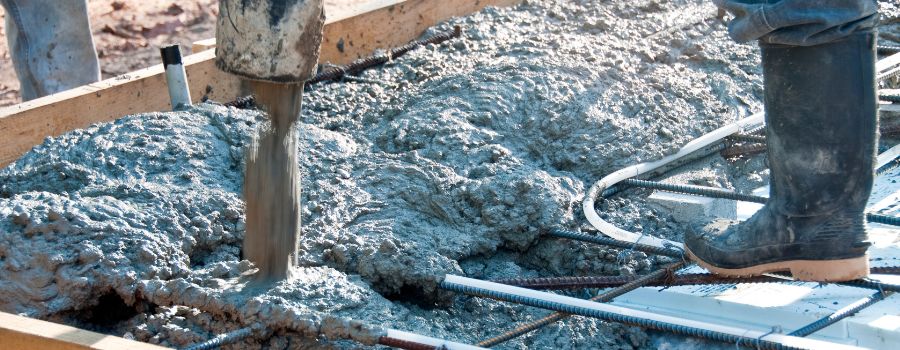Blog Post

7 Precautions While Working With Ready-Made Concrete
Concrete is the backbone of modern construction. Its strength, durability, and versatility make it an essential material in building everything from towering skyscrapers to residential homes. However, working with concrete, especially ready-made concrete, requires attention to safety and precision. In this article, we will explore seven crucial precautions to take when working with ready-mix concrete to ensure the safety of your project, the quality of the final product, and the well-being of everyone involved.
Protective Gear is Non-Negotiable: Working with concrete means dealing with a mixture of cement, water, and aggregates. This mixture is abrasive and can be harmful to your skin, eyes, and lungs. Therefore, the first precaution is to always wear the appropriate personal protective equipment (PPE). This includes safety glasses, a dust mask, gloves, and durable work boots. If your work involves overhead pouring, a hard hat is a must.
Know Your Concrete Mix: Concrete is not a one-size-fits-all material. Different projects require different types of concrete mixes. Always consult with the concrete supplier in London or an engineer to ensure you are using the correct mix for your specific needs. This includes considerations for strength, durability, and environmental conditions.
Water: Measure It, Don't Guess It: Proper water-to-cement ratio is critical for concrete's strength and durability. Too much water weakens the concrete, while too little makes it difficult to work with. Always measure the water accurately and follow the recommended mix ratios. A common mistake is adding more water to make the concrete easier to pour, but it compromises the final quality.
Mixing: Consistency is Key: Whether you're mixing by hand or using a concrete mixer, uniformity is essential. Inconsistent mixing leads to weak spots in the concrete. When mixing by hand, use a square-point shovel and turn the mixture consistently. If using a mechanical mixer, follow the manufacturer's guidelines for speed and duration.
Work Quickly, but Not Haphazardly: Concrete has a limited window of time in which it remains workable, known as the "setting time." Once the setting time is over, the concrete begins to harden. Therefore, work quickly but not so hastily that you compromise the quality of the pour. Adequate planning and preparation are key to ensuring that the concrete is placed efficiently.
Proper Handling of Tools: The tools used for concrete work, such as trowels and floats, can be sharp and heavy. Improper handling can lead to accidents. Always carry tools properly, with sharp edges pointing away from your body. Additionally, if using power tools, ensure they are well-maintained and in good working condition.
Curing is Crucial: Curing is the process of maintaining adequate moisture, temperature, and time to allow the concrete to achieve its desired properties. Neglecting this step can lead to cracking, low strength, and reduced durability. Curing methods vary based on weather conditions and the project's scale, but they may include covering the concrete with wet burlap, plastic sheeting, or applying curing compounds.
Departing Words
In conclusion, working with ready-mix concrete demands precision, safety, and proper knowledge. Whether you are a seasoned contractor or a DIY enthusiast, these precautions are universal and should not be taken lightly. Remember that ready-made concrete is a versatile and valuable construction material, but only if it's handled correctly. Prioritize safety, follow industry best practices, and consult with professionals when in doubt. By doing so, you'll ensure the success of your project and the longevity of your concrete structures.